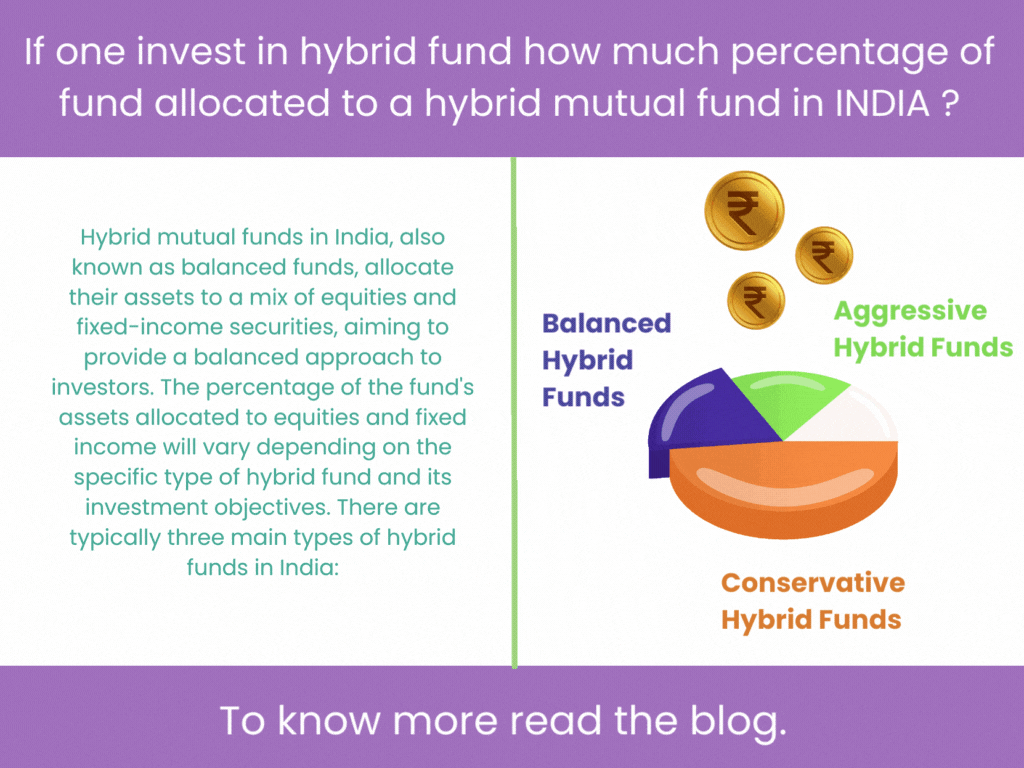If one invest in hybrid fund how much percentage of fund allocated to a hybrid mutual fund in INDIA ?
Hybrid mutual funds in India, also known as balanced funds, allocate their assets to a mix of equities and fixed-income securities, aiming to provide a balanced approach to investors. The percentage of the fund's assets allocated to equities and fixed income will vary depending on the specific type of hybrid fund and its investment objectives. There are typically three main types of hybrid funds in India:
Conservative Hybrid Funds: These funds have a more conservative approach and allocate a higher percentage of their assets to fixed-income securities. The equity allocation in conservative hybrid funds typically ranges from 10% to 25%, while the rest is invested in debt instruments.
Balanced Hybrid Funds: These funds maintain a relatively balanced approach, splitting their assets roughly equally between equities and fixed income. The equity allocation in balanced hybrid funds typically ranges from 40% to 60%, and the remaining portion is invested in debt securities.
Aggressive Hybrid Funds: These funds have a more aggressive stance and allocate a higher percentage of their assets to equities. The equity allocation in aggressive hybrid funds typically ranges from 65% to 80%, with the remaining part invested in debt instruments.
It's important to note that these are general ranges and may vary slightly from one fund to another. The exact asset allocation within a hybrid fund is at the discretion of the fund manager, who will make decisions based on their assessment of market conditions, risk factors, and the fund's investment objectives.
When you invest in a hybrid mutual fund in India, the entire amount you contribute is allocated to the fund, and the fund manager will handle the asset allocation within the fund. The aim of hybrid funds is to provide a balanced portfolio that offers potential for growth through equities while also providing stability through fixed-income investments.
As with any investment, it's essential to carefully review the fund's offer documents, prospectus, and fact sheets to understand its investment approach, asset allocation, fees, and associated risks. Moreover, consider your own financial goals, risk tolerance, and investment horizon to select the most suitable hybrid mutual fund for your portfolio.


